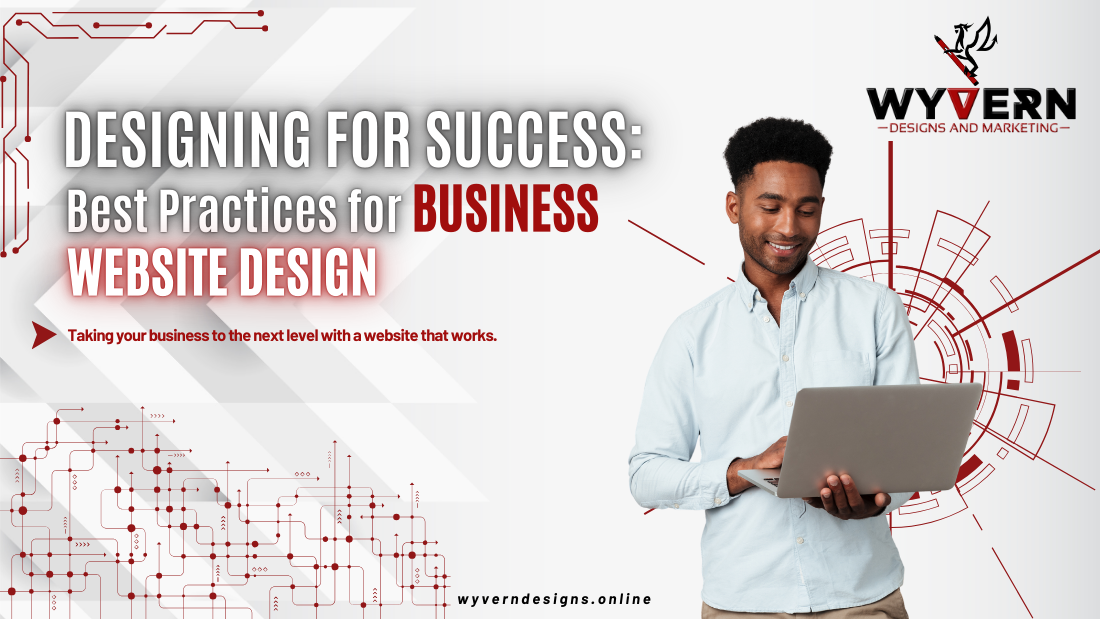Wyvern Marketing: Designing For Success
Creating an effective business website requires more than just a visually appealing design. The content needs to be structured in a way that guides your target audience, builds trust, and drives action. A well-structured website consists of a core set of pages that serve specific purposes, including the Home page, Service pages, About page, Blog page, and Contact page.
Home Page
The Home page is often the first point of contact for your target audience, and it’s essential to make a good impression. The following elements can help you create an effective Home page:
1. Hero Banner: A clear and concise headline and subheading that communicate your value proposition, accompanied by a high-quality image or video. This section should grab the visitor’s attention and encourage them to explore further.
2. Trust Factors: Prominent display of awards, ratings, industry certifications, and notable partnerships to establish credibility. This helps build trust with your audience and reinforces your brand’s reputation.
3. Services/Products Overview: A concise overview of your key services or products, using short descriptions and clear visuals. This section should provide a clear understanding of what your business offers.
4. Company Overview: A brief introduction to your company, highlighting your purpose and values. This helps establish a personal connection with your audience and provides context for your business.
5. Brand Benefits: A summary of the benefits of your offerings, using bullet points, icons, or brand-centric design elements. This section should clearly communicate the value proposition of your business.
6. Social Proof: Client testimonials, case studies, and logos of well-known clients to build trust. This helps establish credibility and reinforces your brand’s reputation.
7. Call-to-Action (CTA) Banner: A clear and compelling CTA that guides visitors to take the next step. This could be to contact you, request a quote, or learn more about your offerings.
8. Blog/Case Studies Preview: A showcase of your latest blog posts or case studies to keep visitors engaged. This section should provide additional value and encourage visitors to explore further.
Service/Product Pages
The Service/Product pages provide detailed information about your offerings and should be structured to clearly communicate their value. The following elements can help you create effective Service/Product pages:
1. Hero Banner: A clear and concise headline and subheading that communicate the service’s value proposition. This section should grab the visitor’s attention and encourage them to explore further.
2. Service/Product Overview: A concise overview of the service or product, focusing on the most important aspects. This section should provide a clear understanding of what your business offers.
3. Service/Product Features: A list of key features, using bullet points, icons, or brand-centric design elements. This section should clearly communicate the benefits of your offerings.
4. Service/Product Benefits: A summary of the benefits of the service or product, addressing common pain points. This section should provide additional value and reinforce the value proposition of your business.
5. Social Proof: Client testimonials, case studies, and logos of well-known clients to build trust. This helps establish credibility and reinforces your brand’s reputation.
6. CTA Banner or Contact Form: A clear and compelling CTA or a simple contact form to facilitate communication. This section should encourage visitors to take the next step and provide a clear call-to-action.
About Page
The About page provides an opportunity to build trust, establish credibility, and create a personal connection with your audience. The following elements can help you create an effective About page:
1. Hero Banner: A headline and subheading that introduce your company’s story. This section should provide a clear understanding of your company’s purpose and values.
2. Company Overview: A brief introduction to your company, highlighting your purpose and values. This helps establish a personal connection with your audience and provides context for your business.
3. Company History: A brief history of your company, highlighting key milestones and achievements. This section should provide additional value and reinforce your brand’s reputation.
4. Values: A summary of your core values and how they influence your business operations. This helps establish a personal connection with your audience and provides context for your business.
5. Leadership Team: A showcase of your key team members, highlighting their roles, expertise, and contributions. This section should provide additional value and reinforce your brand’s reputation.
6. Company Culture: A glimpse into your company culture, highlighting what makes your work environment unique. This section should provide additional value and reinforce your brand’s reputation.
7. Trust Factors: A display of awards, recognitions, or certifications that reinforce your company’s reliability and expertise. This helps establish credibility and reinforces your brand’s reputation.
Blog Page
The Blog page is a powerful tool for establishing authority, engaging with your audience, and driving organic traffic to your website. The following elements can help you create an effective Blog page:
- Hero Banner: A headline and subheading that confirm the visitor is in the right place.
2. Contact Form: A simple and user-friendly contact form that facilitates easy communication.
3. Office Locations: Clear information about your office locations, including maps, contact numbers, and business hours.
Join the Wyvern Marketing community on multiple platforms: Website, Facebook and Instagram.

